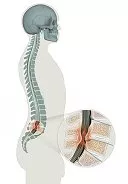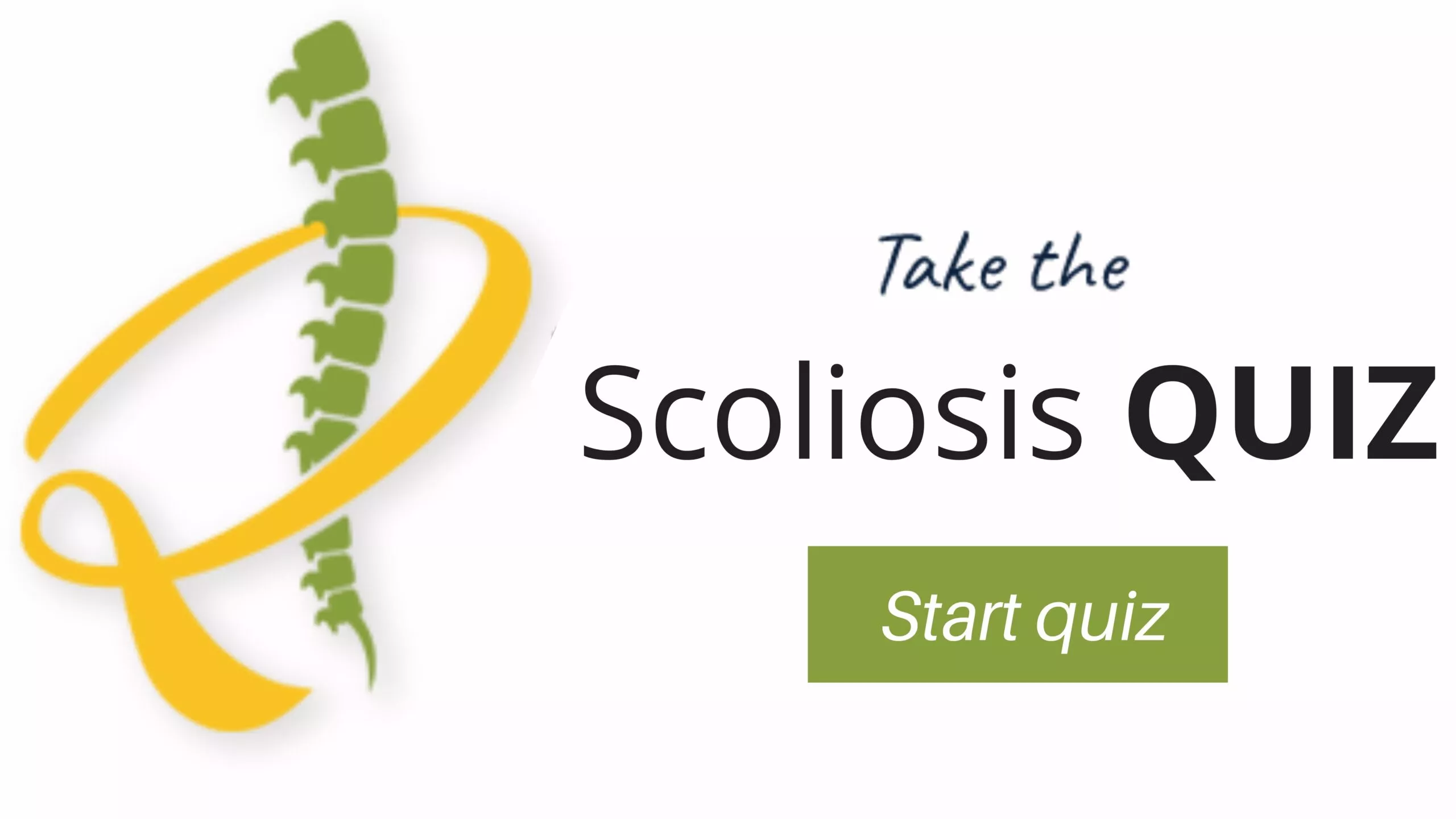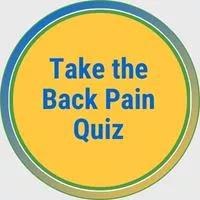Our Spine Center is staffed with Doctors, Specialists, Surgeons, Technicians, and the very best nurses in the world.
Spinal Stenosis
Spinal stenosis, or narrowing of the gaps in your spine, can compress your spinal cord and nerve roots as they depart each vertebra. Doctors believe that Spinal Stenosis occurs because of age-related changes to the spine. In addition, back and neck pain, discomfort, as well as numbness, tingling, and weakness in the arms and legs, are all possible symptoms. Consequently, self-care, physical therapy, medicines, injections, and surgery are among the options for treatment.
Spinal Stenosis Definition
 Doctors refer to a narrowing of one or more places in your spine as spinal stenosis. The amount of room available for your spinal cord and nerves that branch off your spinal cord becomes reduced when space becomes limited within your spine. The causes of back pain link directly to inflamed, compressed, or pinched nerves in the spinal cord. In most cases, spine stenosis develops gradually over time. Osteoarthritis, or “wear-and-tear” changes in your spine that occur naturally as you age, are the most prevalent causes. As a result, even if certain problems exist on X-rays or other imaging tests conducted for another health reason, you may not notice any symptoms for a long time. You may get pain, numbness, tingling, or weakness in your neck, back, arms, legs, hands, or feet, depending on the location and severity of your spinal stenosis.
Doctors refer to a narrowing of one or more places in your spine as spinal stenosis. The amount of room available for your spinal cord and nerves that branch off your spinal cord becomes reduced when space becomes limited within your spine. The causes of back pain link directly to inflamed, compressed, or pinched nerves in the spinal cord. In most cases, spine stenosis develops gradually over time. Osteoarthritis, or “wear-and-tear” changes in your spine that occur naturally as you age, are the most prevalent causes. As a result, even if certain problems exist on X-rays or other imaging tests conducted for another health reason, you may not notice any symptoms for a long time. You may get pain, numbness, tingling, or weakness in your neck, back, arms, legs, hands, or feet, depending on the location and severity of your spinal stenosis.
Spinal Stenosis Primarily Affects Two Areas of the Body
Spine stenosis can affect any part of the spine; however, it most usually affects two areas:
Questions and Answers
What is Spinal Stenosis?
Spinal stenosis is a condition characterized by the narrowing of the spinal canal or the spaces where the nerves exit the spine. This narrowing can put pressure on the spinal cord and nerves, leading to various symptoms. Spinal stenosis most commonly occurs in the lower back (lumbar stenosis) or the neck (cervical stenosis). It is often associated with age-related degenerative changes in the spine, such as osteoarthritis, herniated discs, or bone spurs.
What are the symptoms of Spinal Stenosis?
The symptoms of spinal stenosis can vary depending on the location and severity of the condition. Common symptoms include pain or cramping in the back, buttocks, or legs (lumbar stenosis), or the neck, shoulders, or arms (cervical stenosis). Numbness, tingling, or weakness in the extremities, difficulty walking or maintaining balance, and decreased bladder or bowel control may also occur. Symptoms often worsen with activity and improve with rest or leaning forward. It’s important to note that symptoms can vary among individuals, and some may experience no symptoms at all.
How is Spinal Stenosis treated?
The treatment for spinal stenosis depends on the severity of symptoms and their impact on daily life. Our Doctors will implement Non-surgical treatment options first. This may include pain management with medications, physical therapy, exercise programs focused on strengthening the core and back muscles, and lifestyle modifications. In cases where conservative treatments fail to provide relief, or if t significant nerve compression or spinal instability exists, the doctor may recommend surgery. Surgical options can include decompression surgery to relieve pressure on nerves or spinal fusion to stabilize the spine. The choice of treatment depends on individual factors and our expert spine doctors will make a determination through the evaluation of each patient.
“To be specific, spinal stenosis is a condition we most typically see in patients over 50 years of age. When we treat this condition, we recommend exercise and physical therapy, lumbar traction, medicines, and sometimes epidural steroid injections. If patients do not respond to these conservative treatments, surgery can open up the space available for the nerves.”
Lumbar Canal Stenosis?
The narrowing of the spinal canal or the tunnels via which nerves and other tissues connect with it refers to lumbar canal stenosis. Narrowing of the spinal canal usually occurs by aging-related changes that reduce the canal’s size, such as the misalignment of one of the vertebrae. The nerve root of the spinal cord usually gets pinched when the spinal canal or side canals that protect the nerves narrow. As the canal’s diameter narrows, the nerves get progressively inflamed. The legs, groin, hips, buttocks, and lower back can all become affected by lumbar canal stenosis, which causes discomfort, numbness, and weakness. Walking or standing causes symptoms to increase, whereas laying down, sitting, or leaning forward causes symptoms to improve.
Who Gets Spinal Stenosis?
Spine stenosis can affect anybody, although it occurs most frequently in people over 50. This condition can also affect young persons who were born with a small spinal canal. The causes of spine stenosis link to a variety of disorders affecting the spine, such as scoliosis or damage to the spine.
What Causes Spinal Stenosis?
There are several reasons for spine stenosis. What they all have in common is that they alter the shape of your spine, limiting the area surrounding your spinal cord and nerve roots that escape through it. Compression or pinching of the spinal cord and/or nerve roots produces symptoms such as low back pain and sciatica. The following are some of the causes of spine stenosis:
Bone overgrowth/arthritic spurs:
Osteoarthritis is a “wear and tear” disease that causes the cartilage in your joints, including your spine, to break down. The protective coating for joints is cartilage. The bones start to rub against one other when cartilage goes down. Your body reacts by producing more bone. As doctors, we see the overgrowth of bone, or bone spurs, as a typical occurrence. Bone spurs on the vertebrae expand into the spinal canal, narrowing it and squeezing nerves. Paget’s disease of the bone can lead to an overgrowth of bone in the spine, squeezing nerves.
Bulging discs/herniated discs:
A flat, spherical cushioning pad (vertebral disc) sits between each vertebra and works as a stress absorber along the spine. The gel-like interior of these discs breaks through a weak or torn outer layer due to age-related drying out and flattening of vertebral discs, as well as breaking in the outside border of the discs. The nerves around the disc are then compressed by the bulging disc.
Thickened ligaments:
Ligaments are the fiber bands that connect the vertebrae of the spine. Ligaments can enlarge and protrude into the spinal canal space as a result of arthritis.
Spinal fractures and injuries:
Broken or dislocated bones, as well as inflammation caused by injury to the spine, can limit the canal space and put pressure on spinal nerves.
Spinal cord cysts or tumors:
Growths within the spinal cord or between the spinal cord and vertebrae can restrict the space between the vertebrae, putting pressure on the spinal cord and its nerves.
Congenital spinal stenosis:
A person who is born with a tiny spinal canal is said to have this ailment. Scoliosis is another congenital spinal condition that can cause spine stenosis (an abnormally shaped spine).
We’re here to help STOP THE PAIN
Call 214-556-0555 or Email Us to make an appointment with our expert scoliosis doctors.
Symptoms of Spinal Stenosis?
When spinal stenosis first appears, you may or may not have symptoms. As time goes by, the narrowing of the spinal canal is generally a gradual and progressive process that becomes worse over time. Although spine stenosis can occur anywhere along the spinal column, doctors usually locate it in the lower back (the most frequent location) and neck. Hence, symptoms differ from person to person and might appear and disappear at any time. The following identifies some of the signs and symptoms of lumbar spine stenosis:
- Lower back pain. Pain can range from a subtle aching or discomfort to an electric or searing feeling.
- This is discomfort that starts in your buttocks and spreads down your leg, maybe into your foot.
- Leg cramps in one or both legs due to a heavy feeling in the legs.
- The buttocks, leg, or foot are numb or tingling.
- Leg or foot sluggishness (as the stenosis worsens).
- Standing for lengthy periods of time, walking, or walking downhill causes pain.
- When leaning, bending forward slightly, walking uphill, or sitting, the pain subsides.
- The inability to control one’s urine or bowels (in severe cases).
Symptoms of neck (cervical) Spinal Stenosis Include:
- Neck pain.
- Arm, hand, leg, or foot numbness or tingling
- Weakness or clumsiness in the arm, hand, leg, or foot
- Balance issues.
- Hand loss, such as difficulty writing or buttoning shirts
- The inability to control one’s urine or bowels (in severe cases).
- The following are some of the signs and symptoms of thoracic (abdominal) spine stenosis:
- At or below the level of the abdomen, pain, numbness, tingling, or weakness may exist.
- Balance issues.
Is it possible for Spinal Stenosis to Result in Permanent Paralysis?
While spinal constriction might cause discomfort, it typically does not result in paralysis. Permanent numbness and/or paralysis can occur if a spinal nerve or the spinal cord is crushed for an extended length of time. This is why, if you have numbness or weakness in your arms or legs, you should contact your doctor as soon as possible.
Spinal Stenosis Diagnosis
A physical exam will take place after your medical history is reviewed and questions about your symptoms are answered. During your physical exam, your healthcare provider may feel your spine and push on different regions to see whether it causes discomfort. Usually, your doctor may ask you to bend in different directions to examine whether different postures of your spine cause pain or other symptoms. Finally, your balance, mobility, and walking patterns, as well as your arm and leg strength, will be evaluated by your physician. Imaging tests will take place on your spine to establish the precise location, nature, and degree of the disease. Imaging investigations may involve the following:
- X-rays: X-rays emit a limited quantity of radiation and can reveal changes in a bone structure such as disc height reduction and the formation of bone spurs that narrow the spine’s space.
- MRI: Magnetic resonance imaging (MRI) creates cross-sectional pictures of the spine using radio waves and a strong magnet. The nerves, discs, spinal cord, and the presence of any malignancies are all seen in exquisite clarity on MRI images.
- CT or CT myelogram: A computed tomography (CT) scan uses a series of X-rays to produce cross-sectional pictures of the spine. In a CT myelogram, a contrast dye is utilized to assist reveal the spinal cord and nerves more clearly.
Treatments for Spinal Stenosis?
Treatment options for stenosis are determined by the cause of your symptoms, the location of the issue, and the severity of your symptoms. If your symptoms are minor, your doctor may advise you to try some self-care methods first. If they don’t help and your symptoms continue to worsen, your doctor may suggest physical therapy, medication, and eventually surgery.
Preparing for Spinal Stenosis Surgery?
If you smoke, consult with your doctor about stopping smoking immediately to speed up your recovery. Furthermore, consult with your doctor about stopping any non-essential drugs, vitamins, or herbal therapies that may interact with anesthesia. Finally, ask our doctors any questions or express any concerns you may have.
Why Choose the Southwest Scoliosis and Spine Institute for Your Treatment
Patients with spinal stenosis can benefit from choosing the Southwest Scoliosis and Spine Institute for their treatment for several reasons:
Specialized Expertise
The Southwest Scoliosis and Spine Institute specializes in the diagnosis and treatment of various spine conditions, including spinal stenosis. The institute is staffed with highly skilled and experienced spine specialists, including spine surgeons and other healthcare professionals who have extensive knowledge and expertise in managing spinal stenosis. Their specialized training and experience ensure that patients receive the most accurate diagnosis and effective treatment options for their specific conditions.
Comprehensive Care
The institute offers comprehensive and patient-centered care for spinal stenosis. For example, this includes a multidisciplinary approach, where a team of experts collaborates to develop individualized treatment plans tailored to each patient’s unique needs. The team may include spine surgeons, physical therapists, pain management specialists, and other professionals who work together to address the various aspects of spinal stenosis, including pain management, functional restoration, and improving quality of life.
Advanced Treatment Options
The Southwest Scoliosis and Spine Institute is equipped with state-of-the-art technology and advanced treatment options for spinal stenosis. Interestingly, they stay updated with the latest advancements in minimally invasive techniques, such as decompression surgeries, which can effectively relieve pressure on the nerves while minimizing surgical invasiveness and promoting faster recovery. Also, the institute also offers non-surgical treatment options, including physical therapy, medication management, and lifestyle modifications, providing a comprehensive range of choices to address spinal stenosis.
Patient-Centered Approach
The institute prioritizes patient-centered care, ensuring that patients are actively involved in their treatment decisions. They emphasize open communication, providing patients with a thorough understanding of their condition, treatment options, and expected outcomes. The team at the Southwest Scoliosis and Spine Institute takes the time to address any concerns or questions patients may have, guiding them through every step of their treatment journey.
Track Record of Success
The Southwest Scoliosis and Spine Institute, with offices in Dallas, Plano, and Frisco, Texas, has a track record of successful outcomes in treating spinal stenosis. Besides their expertise, they utilize advanced technology and a patient-centered approach to find solutions for their patients. Thus, patient testimonials and success stories attest to the institute’s commitment to providing high-quality care for spinal stenosis. More importantly, choosing the Southwest Scoliosis and Spine Institute for spinal stenosis treatment ensures access to specialized expertise and comprehensive care. Furthermore, it provides advanced treatment options, a patient-centered approach, and a track record of successful outcomes. In conclusion, it is essential for patients to consult with their doctor about all aspects of their condition. Notably, the discussions should also determine the most suitable treatment path to stop the pain of spinal stenosis.
____________________
Footnote:
American Association of Neurological Surgeons: Lumbar Spinal Stenosis
If you or your loved one is suffering from back pain from a spinal condition, there is hope. We can help. Call Southwest Scoliosis and Spine Institute at 214-556-0555 to make an appointment today.


